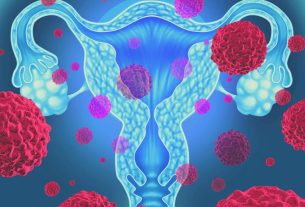Green baby poop is normal in the first few days of your baby’s life due to substances that accumulated in your intestines during pregnancy. However, green stools can also be a sign of intestinal infection, a consequence of breastfeeding, consuming green foods, changing milk or using antibiotics, for example.
It is important to consult your pediatrician in cases where green stools are accompanied by other symptoms, such as fever, colic, diarrhea or changes in the texture of the stools, as this may indicate a food intolerance or intestinal infection.
The treatment of green poop in babies, when necessary, must be guided by the doctor according to the cause, and adjustments in the woman’s and/or baby’s diet or suspension of medication use, for example, may be recommended.

Main causes of green stools in babies
The main causes of green baby poop are:
1. Meconium
Meconium is the baby’s first poop and is characterized by having a dark green or black color, which lightens as the days go by. It is normal for the dark color to remain for up to a week after birth, when it then begins to lighten and become a little yellowish, and greenish lumps may also appear. Learn more about meconium.
What to do: In this case, it is not necessary to carry out specific treatment, it is only recommended to continue feeding the baby normally, as this color change is natural and healthy.
Don’t ignore the signs your body is giving you!
2. Breastfeeding
It is normal for babies who exclusively breastfeed to have light green stools. However, if the stool becomes darker and has a frothy texture, it may be a sign that he is only sucking the beginning of the milk that comes from the breast, which is rich in lactose and low in fat, which does not favor his growth.
What to do: It is important to be careful that the baby completely empties one breast before passing it to the other, as the fatty part of the milk comes at the end of the feed. If the baby gets tired or stops breastfeeding, when he feels hungry again, you should give him the same breast as the previous feeding, so that he finishes receiving the nutrients.
3. Change of milk
Children who take milk formulas usually have dark yellow stools, but the color often changes to greenish when the formula is changed.
What to do: green stools are normal when changing formula, returning to normal after 3 days. However, in addition to green stools, other symptoms such as diarrhea and frequent cramps may appear, which may indicate intolerance to the new formula. In these cases, you should go back to the old formula and see your pediatrician for new instructions.
4. Intestinal infection
Intestinal infection causes intestinal transit to be faster, causing diarrhea. As a result, bile, a greenish substance responsible for digesting fats, is quickly eliminated from the intestine, making the feces greener.
What to do: It is important that the pediatrician is consulted if the baby has very liquid stools, fever or vomiting, so that the diagnosis can be made and treatment can be started, which normally involves the use of oral rehydration serum. See more about intestinal infections in babies.
5. Green foods
The color of the stool may also be due to sensitivity to foods in the mother’s diet or the high consumption of green foods by babies who already consume solid foods, such as spinach, broccoli and lettuce.
What to do: Breastfeeding women must have a balanced diet and be careful about the consumption of new foods that may cause changes in their babies’ stools, including cow’s milk, which can cause allergies in the child. For babies who consume solid foods, removing green vegetables may be enough to improve the appearance of their stool.
6. Use of antibiotics
The use of antibiotics can change the color of feces by reducing the intestinal flora, as the beneficial bacteria in the intestine also contribute to the natural color of poop.
What to do: In general, the stool returns to its normal color about 3 days after stopping the medication. However, if the stool remains green and other symptoms appear, such as pain and diarrhea, it is important that the pediatrician is consulted.
Bibliography
- MORAIS BATISTA, Mauro. Signs and symptoms associated with digestive tract development. journal of Pediatrics. 92, ed; 46-56, 2016
- BRITISH MEDICAL ASSOCIATION. Meconium Aspiration Syndrome. 2019. Available at: <https://bestpractice.bmj.com/topics/pt-br/1185 >. Accessed on April 29, 2021
- MORAIS BATISTA, Mauro. Signs and symptoms associated with digestive tract development. journal of Pediatrics. 92, ed; 46-56, 2016
- Kliegman, Robert M. et al. Nelson Treatise on Pediatrics. 20 ed.. Rio de Janeiro: Elsevier, 2018.
- GOLDMAN, Lee; SCHAFER, Andrew I.. Goldman-Cecil Medicina. 25.ed. Rio de Janeiro: Elsevier, 2018.

Sign up for our newsletter and stay up to date with exclusive news
that can transform your routine!
Warning: Undefined array key "title" in /home/storelat/public_html/wp-content/plugins/link-whisper-premium/templates/frontend/related-posts.php on line 12
Warning: Undefined array key "title_tag" in /home/storelat/public_html/wp-content/plugins/link-whisper-premium/templates/frontend/related-posts.php on line 13




